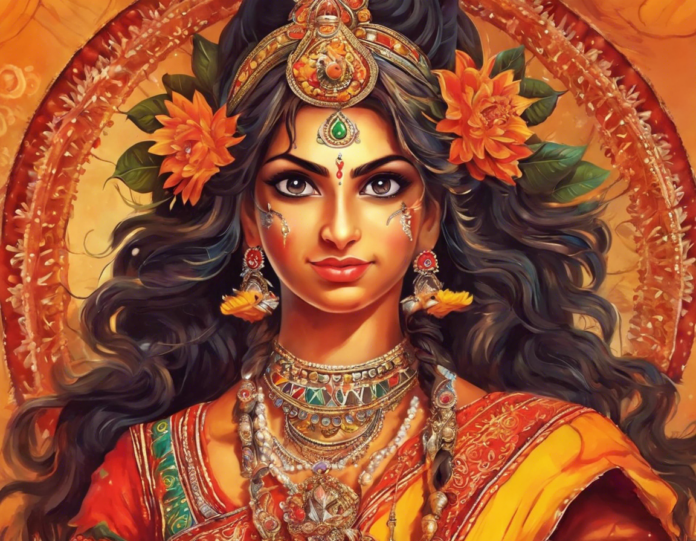Navratri is a significant Hindu festival that lasts for nine days and is dedicated to the worship of Goddess Durga in her various forms. One of the essential rituals during Navratri is the Kalash Sthapana, also known as Ghatasthapana or Kalashsthapana. It marks the beginning of the Navratri festival and involves the symbolic installation of a Kalash (earthen or metal pot) filled with water and topped with mango leaves and a coconut. This ritual is performed to invite the divine energy into the house and seek the blessings of the Goddess.
Significance of Kalash Sthapana
The Kalash represents Lord Vishnu, while the water in the pot symbolizes creation and the primordial waters. The mango leaves are believed to attract positive energy, and the coconut represents divine consciousness. Together, the Kalash symbolizes abundance, auspiciousness, and completeness, making it a vital aspect of Navratri celebrations.
Kalash Sthapana Date and Time for Navratri 2023
Navratri is celebrated twice a year – Chaitra Navratri (in March or April) and Sharad Navratri (in September or October). The Kalash Sthapana for Navratri 2023 will take place on Sunday, 1st October 2023. The most auspicious time for Kalash Sthapana on this day will be during the Pratipada Tithi, which is the first day of the Navratri festival.
Procedure for Kalash Sthapana
Here is a step-by-step guide on how to perform the Kalash Sthapana ritual during Navratri:
-
Selecting the Kalash: Choose a clean Kalash and fill it with water. Add nine types of grains like wheat, barley, rice, etc., symbolizing the nine forms of Goddess Durga.
-
Preparing the Kalash: Place mango leaves on the mouth of the Kalash in such a way that they bend on all sides. Then, put a coconut over the leaves and tie a red or yellow thread around the coconut.
-
Placement of Kalash: Put the Kalash in the Puja room or the area where you plan to perform the Navratri rituals. Ensure that it is placed on a bed of rice.
-
Offerings and Prayers: Light a lamp in front of the Kalash, offer flowers, fruits, and sweets, and recite mantras dedicated to Goddess Durga.
-
Daily Rituals: During the nine days of Navratri, the Kalash needs to be taken care of by changing the water daily and offering fresh flowers and fruits.
Importance of Kalash Sthapana during Navratri
- The Kalash Sthapana ritual is believed to invoke positive energies into the household and create a sacred atmosphere conducive to worship.
- It is considered a way to welcome Goddess Durga into one’s home and seek her blessings for health, wealth, and prosperity.
- The completion of the Kalash Sthapana marks the beginning of the festivities, including fasting, prayers, and garba (traditional dance).
Frequently Asked Questions (FAQs) about Kalash Sthapana during Navratri:
- What is the significance of Kalash Sthapana during Navratri?
-
Kalash Sthapana is performed to invite divine energy into the house and seek the blessings of Goddess Durga for auspiciousness and prosperity.
-
Can the Kalash be placed outside the house during Navratri?
-
It is preferable to place the Kalash inside the house, in a clean and sacred space like the Puja room, for performing the rituals.
-
What materials are required for Kalash Sthapana?
-
You will need a Kalash, water, mango leaves, coconut, grains, flowers, fruits, sweets, lamp, and incense for the ritual.
-
How long should the Kalash Sthapana be kept during Navratri?
-
The Kalash is kept for the entire nine days of Navratri, and daily offerings and prayers are made to it.
-
Can anyone perform the Kalash Sthapana ritual during Navratri?
-
Yes, anyone who wishes to seek the blessings of Goddess Durga can perform the Kalash Sthapana ritual with devotion and sincerity.
-
What should be done with the Kalash after Navratri ends?
- After Navratri, the water in the Kalash is used for nourishing plants, and the other materials can be immersed in a water body as a customary practice.
Performing the Kalash Sthapana ritual with faith and devotion is an essential part of Navratri celebrations. It not only sets the tone for the nine-day festival but also signifies the auspicious beginning of seeking the blessings of Goddess Durga for protection and prosperity.


